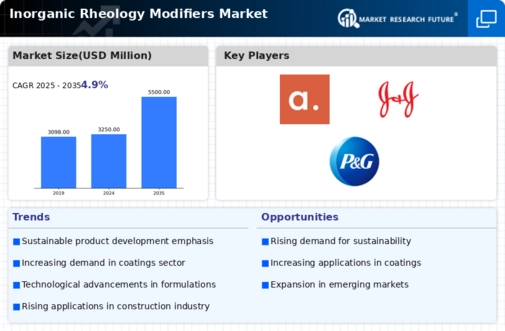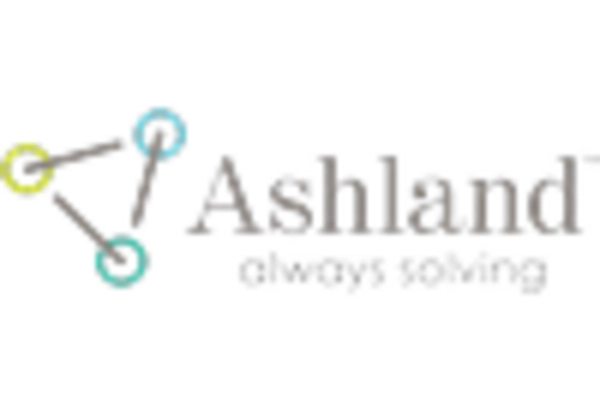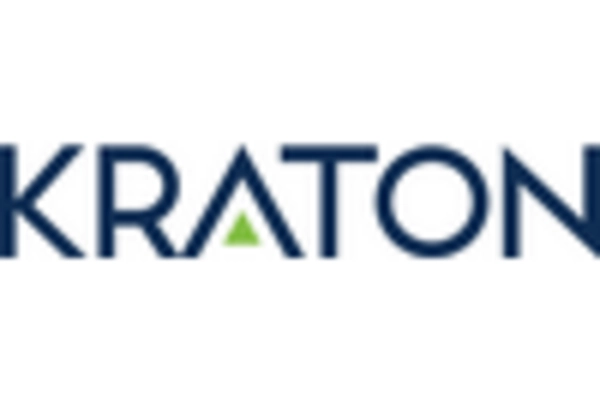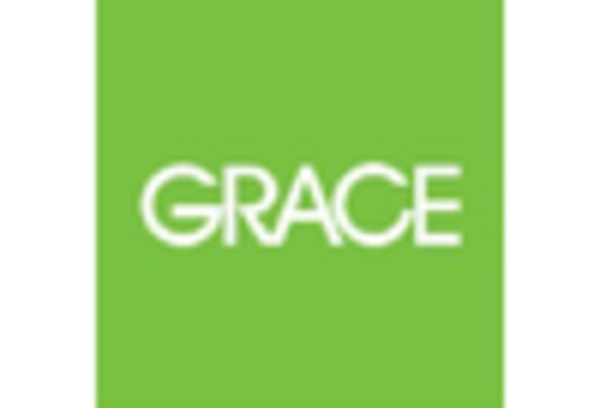Advancements in Paints and Coatings
The Global Inorganic Rheology Modifiers Market Industry benefits from advancements in the paints and coatings sector. Inorganic modifiers are integral in formulating paints that require specific flow properties and stability. These modifiers improve the application characteristics of paints, ensuring uniform coverage and preventing settling. The increasing focus on eco-friendly and sustainable products drives innovation in this sector, leading to the development of new formulations that utilize inorganic rheology modifiers. As the market evolves, it is anticipated that the demand for these modifiers will grow, contributing to the overall market value projected to reach 5500 USD Million by 2035.
Growing Demand in Construction Sector
The Global Inorganic Rheology Modifiers Market Industry experiences a notable surge in demand driven by the construction sector. As urbanization accelerates, the need for high-performance construction materials increases. Inorganic rheology modifiers enhance the viscosity and stability of cement and concrete mixtures, thereby improving workability and reducing segregation. This trend is particularly evident in emerging economies where infrastructure development is a priority. The market is projected to reach 3250 USD Million in 2024, reflecting a robust growth trajectory. The construction industry's reliance on these modifiers is expected to bolster the market further, indicating a strong correlation between construction activities and the demand for rheology modifiers.
Rising Demand in Personal Care Products
The Global Inorganic Rheology Modifiers Market Industry is witnessing a rising demand in the personal care sector. Inorganic rheology modifiers are utilized in various formulations, including lotions, creams, and gels, to enhance texture and stability. The trend towards natural and organic personal care products has led to an increased focus on the formulation of products that require effective rheological properties. As consumers become more discerning about product quality, manufacturers are likely to invest in high-performance modifiers to meet these expectations. This shift is expected to drive growth in the market, aligning with the projected CAGR of 4.9% from 2025 to 2035.
Technological Innovations in Manufacturing
The Global Inorganic Rheology Modifiers Market Industry is significantly impacted by technological innovations in manufacturing processes. Advances in production techniques enable the development of more efficient and effective rheology modifiers. These innovations lead to improved product performance, allowing manufacturers to create formulations that meet specific application requirements. As industries seek to optimize their products, the integration of advanced manufacturing technologies is likely to drive the demand for inorganic rheology modifiers. This trend underscores the importance of continuous improvement in production methods to enhance the overall market landscape.
Regulatory Support for Sustainable Practices
The Global Inorganic Rheology Modifiers Market Industry is positively influenced by regulatory support for sustainable practices. Governments worldwide are increasingly implementing regulations that promote the use of environmentally friendly materials in various industries. Inorganic rheology modifiers, often derived from natural sources, align with these sustainability goals. This regulatory environment encourages manufacturers to adopt these modifiers in their formulations, thereby enhancing their market appeal. As sustainability becomes a critical factor in product development, the demand for inorganic rheology modifiers is expected to rise, further solidifying their role in the market.

















Leave a Comment